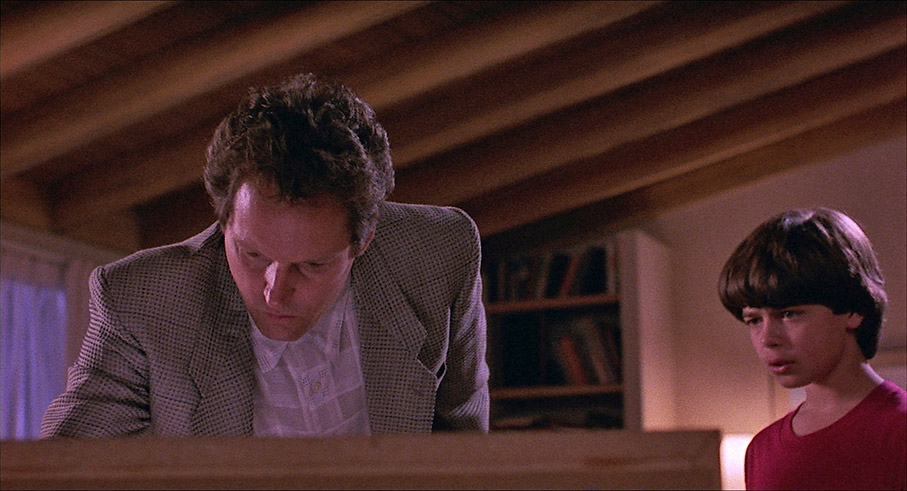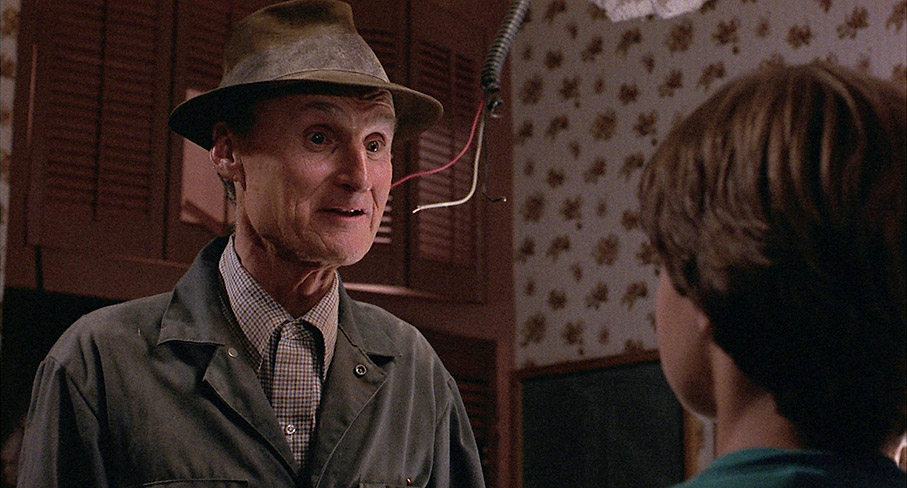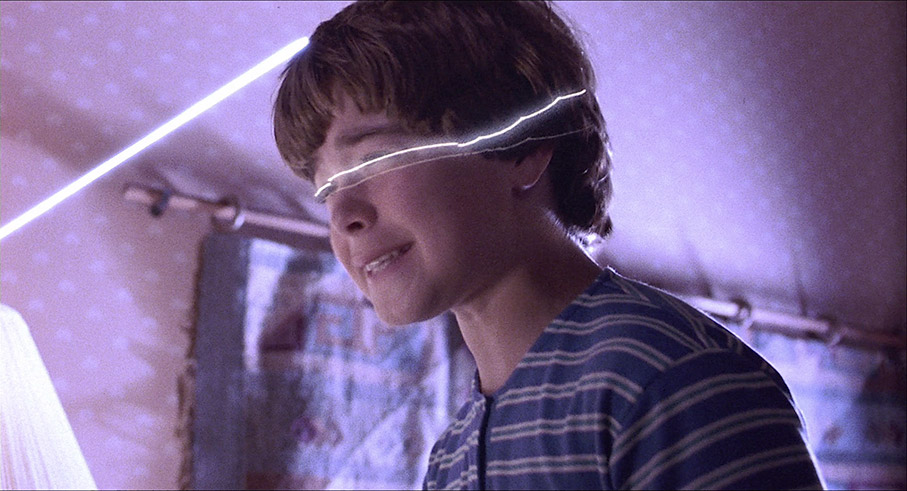|
Electricity is dangerous. Sure, it’s also essential to so many aspects of our daily lives now, but mess with it and you’ll pay the price. I’ve received three notable electric shocks in my life. Typically, the second shock happened just ten seconds after the first, probably because after being jolted once I then repeated what I’d done to trigger the first one. I didn’t think it through, just acted instinctively in a shock-induced panic like the spectacular dumbass I sometimes am. Had that second one not hurt as much as it did, I’d probably still be there now, being repeatedly launched into the air before grabbing the same faulty plug over and over again. Oh yeah, electricity is dangerous alright. Now imagine if it was sentient and had a malicious streak. Not only could it turn all of your electrically powered devices against you, but it could use anything conductive to move around your house and fracture non-electrical fittings such as gas and water pipes. How do you fancy that? Preposterous, of course, but this is the concept at the centre of writer-director Paul Golding’s 1988 tech-horror, Pulse. And you know what? Here it doesn’t seem anything like as daffy as it may sound.
The film starts in that favourite horror manner by showing us something that we know is bad but don’t fully understand yet in a foretaste of things to come. Here adult couple Bill and Ellen (Cliff De Young and Roxanne Hart) are woken in the night by the sounds of pandemonium in the house across the road owned by elderly widower Mr. Jordan. It sounds at first as if Jordan is being violently assaulted, but it soon becomes clear that he has gone bonkers and is furiously smashing up his own property. By the time the police arrive, and the neighbours have all gathered outside in the street, Jordan is dead. We don’t know exactly what’s happened here, but the signs are ominous.

Cut to an airplane interior and young and glum-looking David (Joey Lawrence) is making the journey alone from far off Colorado for a doubtless scheduled visit with his Dad and the woman he married after the spilt with David’s mother. And what do you know, it’s Bill and Ellen from the opening scene. They pick David up at the airport and as they reach home Ellen tells David about the recent drama and points out the Jordan house, the windows of which have since been boarded up. The next day, a prior engagement takes Bill and Ellen out for the evening and David stays in to watch the ball game on TV. It’s all going well until a strange interference messes up the picture, then the dryer turns itself on and starts sparking in the arhythmic manner of a morse code telegraph. Of course, when Bill and Ellen get home, the sparking has ceased and the TV is working fine, but when Bill tries to switch it off, it refuses to respond.
Before we go on any further there are a few things worth noting here. The first is that while David doesn’t know yet what’s happening, we’ve been effectively clued in by shots of arching electricity and macro closeups of the interiors of electrical devices. Here strange things are happening, as sparks roll across surfaces and solder joints heat up, liquify and subdivide like metallic micro-organisms reproducing. Long before any obligatory verbal confirmation, we know that there’s something sinister and alien in the wiring and the electrical devices of the house. I also omitted one small but interesting detail from the above synopsis. At breakfast that morning, Ellen reveals to Bill that the VHS rental tape he finds on the table was one she hired for them to watch that evening, unaware that David’s treasured ball game was on TV or that Bill had already made plans for himself and his partner. Something about a function at a colleague’s house and “Madison Avenue types,” he reveals. David is invited but understandably declines. While I appreciate his decision, I’d probably have gone anyway just for the chance to kick one of these “Madison Avenue types” squarely in the nut sack. Anyway, during a commercial break in the ball game, David decides to watch a bit of the movie they’d hired for the evening, but the images that appear – a photo album page on which a ring of hair is taped, into which the camera delves and from which synaptic sparks then crackle – are a little disconcerting, to say the least. Imagine a post-Eraserhead era David Lynch take on Ringu. Except Pulse was made ten years before Nakata Hideo’s haunted videotape horror gem. It’s after this that all the weird electrical things start to happen. Even this early in the story I found myself wondering how the hell I’d never seen Golding’s already intriguing film before.
After making friends with local kid Stevie (who is played by Joey Lawrence’s younger brother Matthew), a curious David enlists his help to break into the Jordan house. Stevie loses his nerve and flees but David enters anyway. The interior is a mess, the floor still soaked from broken pipes, electrical fittings torn out and appliances wrecked. While exploring, David startled by a manufactured jump scare when an old man (the instantly recognisable Charles Tyner, whose character really is credited as ‘Old Man’), whom David had seen taking an interest in the house, literally drops down from the floor above. He talks to David, in his engagingly batty way, about “the voices in the wires” and reveals that he’s seen something like twenty houses that have been wrecked just like this one. He knows what’s going on, he claims, but he’s not going to talk about it, “not anymore.” It’s thus left for David to suss out that whatever infested the Jordan house has now made its way into Bill and Ellen’s quiet suburban home.

In some ways, we’re in familiar territory here. Having a child uncover a horror that adults are effectively blind to goes all the way back to William Cameron Menzies’ 1953 sf favourite, Invaders from Mars and probably beyond. It’s a sound strategy. Most horror tales require their lead character to be mentally or physically isolated in some way (hence the problems created for horror filmmakers by the arrival of the mobile phone) and making the lead character in your movie a child gives you an advantage straight out of the gate. Kids have wild imaginations and are prone to making up stories or misinterpreting what they are not yet old enough to fully comprehend. Thus, when they try to convince any adult within earshot that the wild story that they’ve told them is true, it’s not a stretch when even the most understanding of adults choose not to believe them. I certainly wouldn’t. Yet while Bill predictably dismisses David’s claims as a young boy’s imagination running wild, Ellen is not so quick to judge. This is an especially neat twist because Ellen would usually be cast as the disruptor, an unpleasant individual responsible for busting up the family unit thus a likely candidate for disposal to allow for later reunification. But in Pulse, Ellen is the complete opposite, a kindly, good-natured and maternal woman who initially seems more concerned about David’s welfare than his distracted father. We never meet David’s biological mother, but nothing David says suggests she is in any way a monster either. Pulse is a rare horror film in which parents have divorced and remarried and everyone seems fine with that arrangement. Nice one, Mr. Golding. No, what torments David is not that his father has remarried, but that he never gets to spend any quality time with a man who seems so caught up in his work that he has little time left for his son. It’s an aspect of Bill’s personality that clearly also impacts on Ellen, but she’s just too nice a person to let it get to her.
But Pulse is not just a socially worthy horror flick, it’s a smartly written and directed one that knows its genre tropes and is aware that we also know them, so is able to play some neat games with our expectations. A good example of this comes when David tells Bill and Ellen that the TV was acting strangely. As expected, the damned thing works fine when they check it out, but both adults are then thrown when neither are able to switch the TV off. Aha, David was right then, there’s something spooky happening here. Cut immediately to the next morning and TV repairman Paul (Robert Romanus) is explaining to Ellen that the television’s main power switch has shorted out, the result of an electricity spike, or a pulse as they’re called. Ah, a more grounded and scientific explanation, then. Well, not quite. Paul then claims that to fuse a switch this badly would take a couple of thousand volts and then shows his worth as a repairman by admitting that he doesn’t have a goddamned clue what happened here. I also like that David’s first real clue that what once lived in the Jordan house has moved across the street is not the misbehaviour of electrical devices, but his realisation that the edge of their well-watered lawn closest to the house is dying and that old man Jordan’s house was similarly affected.

Performances are first-rate across the board, with none of the shouty overplaying that was often a feature of 80s horror and action movies. In a strong supporting cast I particularly liked Robert Romanus as abovementioned TV repairman Paul, and the fact that he tells us as much about himself by the way he stands and moves towards Ellen as he does with his words. There’s quite a bit of such thoughtful, short-cut storytelling at play here. Even young Joey Lawrence is impressive, convincingly rattled when things start getting weird and never cloying or annoying in that way child actors in genre movies could so often be. Golding’s direction is also noteworthy, particularly the way he clues us in to what’s happening using only imagery and sound. He’s well served on this score by his collaborators. The slowly snaking dolly shots of cinematographer Peter Lyons Collister’s camera, some striking macro close-up work by Oxford Scientific Films, Bob Edwards and Gordon Ecker’s deliciously creepy sound design, Gib Jaffe’s sharp editing and Jay Ferguson’s atmospheric electronic score all combine to create a potent sense of an invisible but malevolent force that really is a threat to life and limb.
I really, really liked Pulse, far more than I expected to. In many ways, it’s a suburban rethink of the poltergeist movie, but here the haunting force is one that we freely invite into our homes on a daily basis and around which modern life has come to revolve. Its portrait of a family troubles is subtly handled and integrated into the story, it’s lead characters are well drawn and likeably played, and it looks and sounds great. Two set-pieces involving a locked garage and a burning-hot shower are both serious wind-ups and it builds to a well-staged and suitably tense climax. That it was writer-director Paul Golding’s only feature seems a little mad in retrospect, as does the fact that I’ve not caught it until now, a victim, no doubt, of the days when the evening’s entertainment was dictated in part by how attracted I was to the rental video cover. It’s a welcome and timely rediscovery from Eureka, working not just as tech-horror but as a social drama and, more significantly, a warning about our reliance on everyday technology. I am by nature adverse to the idea of remakes, but I have a feeling that a thoughtful and carefully handled modern update – one in which the internet, mobile phones and so-called ‘smart’ devices are thrown into the mix – could prove even more chillingly relevant.
A lovely 1080p transfer in the film’s original 1.85:1 aspect ratio. The colour is pleasingly naturalistic with those glowingly bluish night scenes so popular in the 80s, the contrast balance close to perfect and the picture detail is sharp and clearly defined with no hint of artificial enhancement. A fine film grain is visible and there’s not a sign of damage or dirt.

The Linear PCM 2.0 stereo soundtrack is also in terrific shape, with clear presentation of the dialogue and wonderful reproduction of the film’s spooky use of electronic sound effects. The stereo channels are clearly defined, with effects and music specifically situated across the front sound stage. There’s no sign of wear or damage.
Optional English subtitles for the deaf and hearing impaired have been included.
Audio Commentary with Amanda Reyes
Film and television historian, academic, and editor and co-author of Are You in the House Alone? A TV Movie Compendium 1964-1999 Amanda Reyes has so much to tell us that I spent a good part of the commentary wondering how she was drawing breath. Not that I’m complaining, as Reyes covers so much ground with such keen perception that I gave up trying to take notes and just sat back and absorbed what she had to say. She states up front that she regards Pulse as a “great, underrated horror movie,” and I’m with her on that, then launches into an in-depth discourse on the film, the cast, the filmmakers, the characters, suburbia, technology and 80s tech-horror, the role of the family and ‘the terrible place’ in modern horror, Oxford Scientific Films, and an absolute lorryload more. You get more information on and analysis of the film and related topics here than in the complete set of special features on some discs.
Tuning in to Tech-Horror (14:01)
A video essay by author and film historian Lee Gambin, who here breaks from his usual animated commentaries to read from a pre-prepared script that takes us through some of the key films in the tech-horror subgenre. There’s particularly emphasis on Pulse, of course, clips from which are combined with posters from the titles under discussion to provide visual accompaniment.
Original Theatrical Trailer (0:55)
A short but niftily edited trailer, one whose 4:3 framing and standard definition level of detail suggest it has been sourced from a home video release.
Also included is a Limited Edition Collector’s Booklet featuring a new essay by film scholar and author Craig Ian Mann; and an article on the film by filmmaker Adrián García Bogliano, but this was not available for review.
An unjustly overlooked tech take on the haunted house movie, Pulse is a little belter of a one-off from a writer-director I would love to have seen more from, and whose one stab at a feature deserves to find a wider audience amongst genre fans. Eureka has served up a fine transfer here that showcases the film’s audio-visual strengths, and the special features, though limited in number, are first-rate. Even the Blu-ray cover is neat, having been given the worn look of a well-used VHS cover. Absolutely recommended.
|